This post may contain affiliate links. If you make a purchase through a link, I may receive a small commission, at no cost to you. These commissions help keep this website up and running, and I thank you for your support. Read my full disclosure here.
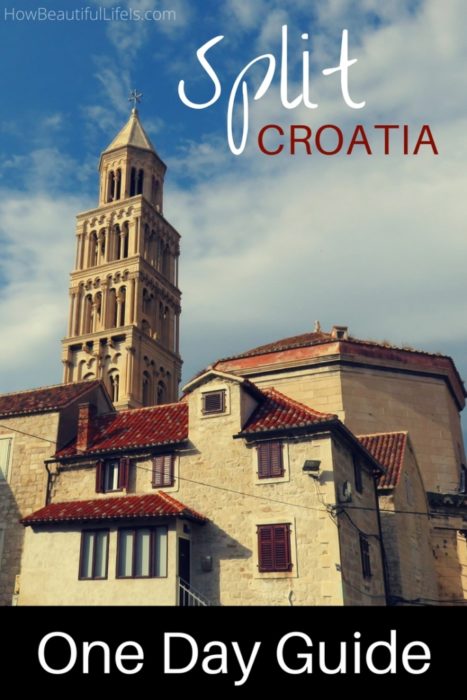
We visited Split as part of our amazing two week holiday in Croatia. We drove to Split from the stunning Krka National Park where we had stayed for several days. We decided to head to Split early in the morning so we could spend some time at the beach before checking in and exploring the old town in the afternoon. As we live in the UK, we were desperate to get as much sunbathing and swimming crammed into our trip as possible.
The drive to Split was very scenic. We drove through beautiful Croatian countryside and then as we drove into Split, the road took us along the cliffs above the city, offering up great views. To get to the beach, we drove up Šetalište Ivana Meštrovića road, which runs along the coast and into the Park Marjan area. We parked in Bay Ježinac and found several nice nice swimming spots to choose from. There was ample parking which also seemed free (well we didn’t see any parking signs and we never received any parking tickets!).
If you don’t have a car, then you can get to this area by bus. As well as the lovely beaches to enjoy, you can also explore Park Marjan. From the end of the promenade there are a set of 314 steps which will take you to the top of the 178m high Marjan hill and reward you with stunning views over Split.
After spending some time sunbathing and swimming in the beautiful clear waters, we moved onto our accommodation so we could get checked in, drop our gear off and park the car. Driving around split is reasonably easy as they have multi-lane roads and it wasn’t that busy, however, as soon as we got off the main roads and into the residential areas, the roads became rather narrow, which wasn’t helped by the fact that cars were parked on both sides of the road. This, along with the steepness of some of the roads, made things rather hairy. We had found it difficult to get cheap accommodation with onsite parking, so we had to nervously park our car on one of these narrow roads. Thankfully our rental car made it out OK, but there were plenty of local cars around with lots of bumps and scratches. Just remember to fold in your side mirrors!

In the afternoon we headed down to explore Split and it’s amazing Diocletian’s Palace. Built by Roman Emperor Diocletian at the turn of the fourth century AD, the Diocletian Palace is one of the best preserved monuments of the Roman architecture in the world. It was constructed between 295 and 305 AD and is now a UNESCO world heritage site. The Palace was built as a combination of a luxury villa summer house and a Roman military camp which was divided into four parts with two main streets.
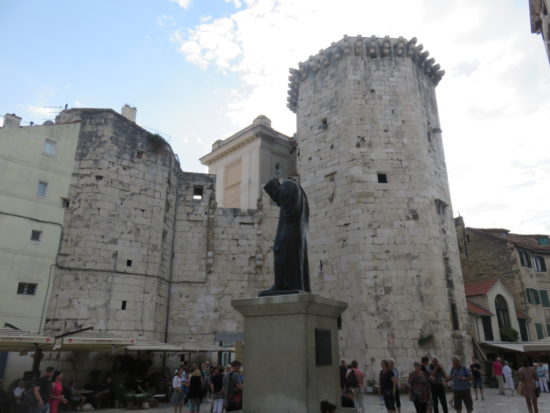
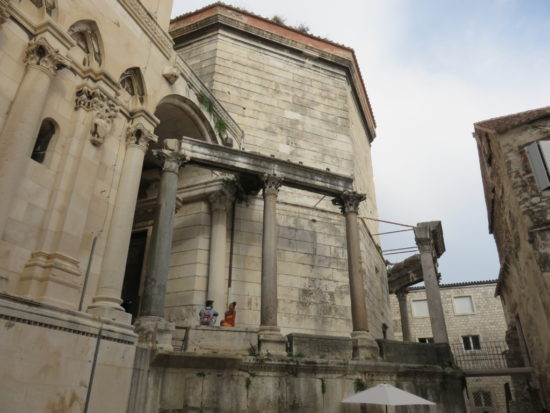
There are four gates that were originally used to enter the old town, these are:
- The Golden Gate which is the northern entrance. Emperor Diocletian walked through these gates as he entered the Palace on the 1st of June 305. Built in the shape of a rectangle, the façade is decorated with niches containing figure sculptures of the four tetrarchs – Diocletian, Maximian, Galerius and Constantius Chlorus. These doors led directly towards nearby Salona (now rebuilt and called Solin), which was the capital city of the Roman Province Dalmatia, and could only be used by the emperor and members of his family.
- The Silver Gate was used to enter the palace from the east towards the west, through the main street.
- The Iron Gate’s high arches lead from the Peoples Square (Narodni trg) to the Diocletian’s Palace. In the eleventh century, a small church of our Lady of the Belfry was built above the door. It was originally dedicated to St Theodor and features a beautiful early Romanesque bell tower.
- The Brass Gate leads through the Substructures directly out to the sea. If attacked from the mainland these gates would have provided a route to flee out to sea.
The Iron Gate
We threaded our way through narrow ancient alleyways and headed through the Iron Gate, arriving at the Dioklecijanova (Cardo Maximus) or the Peristyle, the central square of the Palace. Apparently, the Emperor would appear under the architrave of the central part of the Protyron (the four columns carrying a gable), and his subjects would approach him, kneeling down and kissing the hem of his cloak, or fall in front of him. Apparently, the purply-red granite in the columns was to emphasise the ceremonial function as the imperial colour was purple.
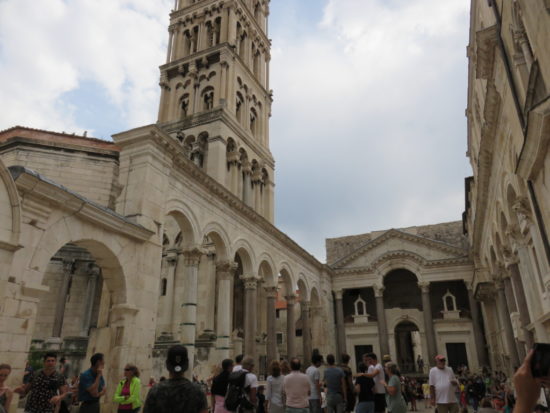
The square is often used to hold performances as it provides unique acoustics, however, there were no performances whilst we were there, but we did take the opportunity to sit on the steps to enjoy a drink. The nearby café provides cushions to protect your bottom from the hard stone and waiters dart out amongst the crowds to serve you drinks on the steps. It’s a good way to take it all in whilst being watched over by the 3500 year old sphinx.
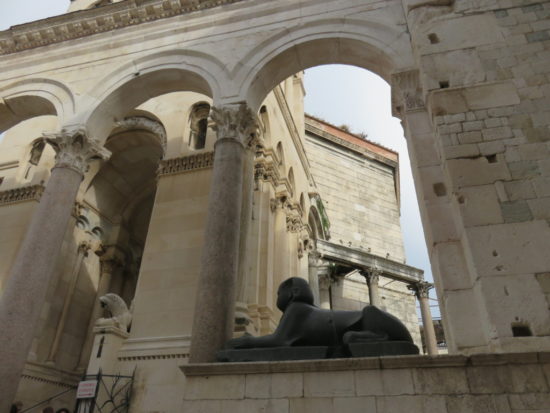
We then headed down into the Substructures, where we found a bustling market. Apparently over the years the substructures had been filled with rubbish from the households above it, but after years of conservation work they are now open to the public. Off to the left and right of the central hall, (near the Brass Gate exit to the esplanade) you can pay to explore the depths of the Substructure. This Substructure was used as a filming location for The Game of Thrones. It was where Daenerys Targaryen kept her dragons chained up. It’s a fascinating place and a little spooky. I kept imagining how utterly dark it would be if the electricity went.

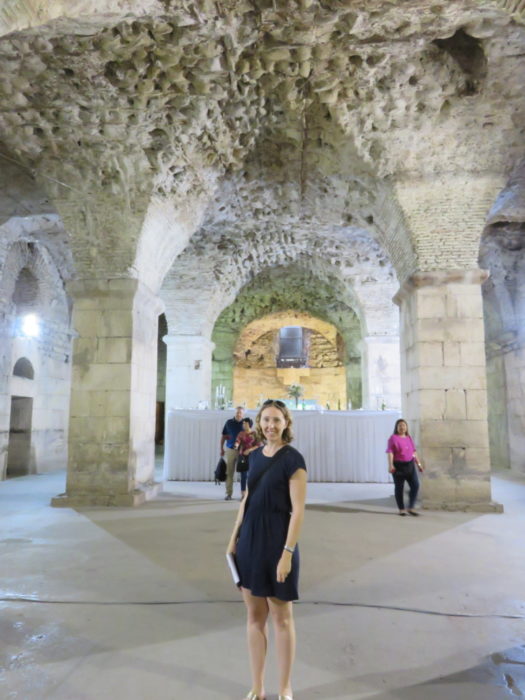
Afterwards, we headed outside again. There are many other amazing buildings to explore including the Cathedral and Bell Tower of Saint Domnius. For a small fee you can ascend the tower. You do need a reasonable level of fitness to get to the top, as there are 181 steps, but your efforts are rewarded with 360 degree views of the city. You can also buy a combined ticket to enter the Temple of Jupiter, cathedral, crypt and treasury.
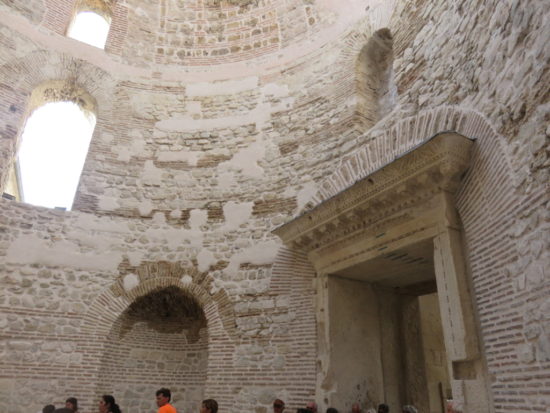
We walked on to enter the Vestibule which is rectangular from the outside, but circular on the inside. It was used to enter the residential part of the palace. We then headed over to the north entrance to see the Golden Gate and to rub the toes of the nearby statue of the Bishop Gregius of Nin. Gregius opposed the Pope and introduced the national language into the religious services after the Great Assembly in the year 926. Apparently rubbing his toes is supposed to bring luck, so his poor feet are now very shiny and worn.
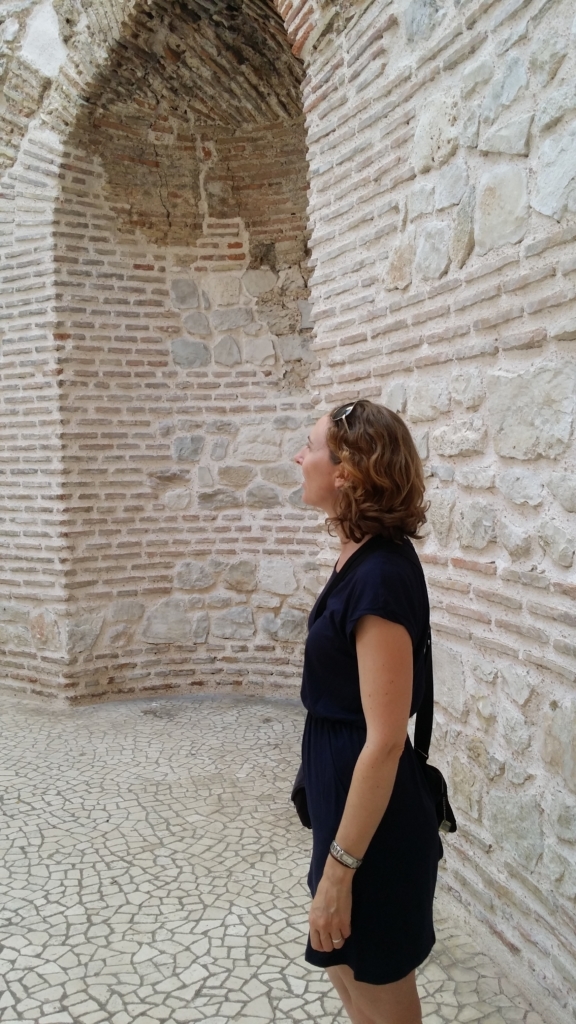
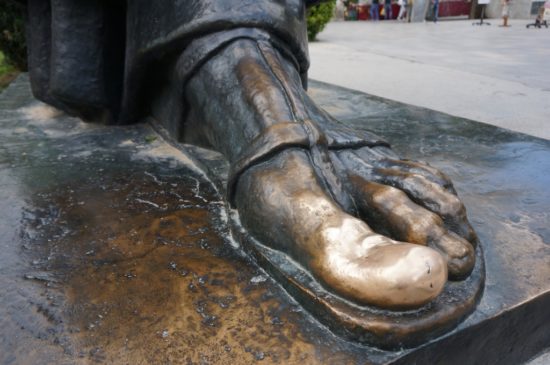
By this time, our own feet were weary, so we headed to Paradox Wine and Cheese Bar (Ulica bana Josipa Jelacica 3, Split 21000) to enjoy some Croatian wine and cheese They had a lovely rooftop terrace where we could get a glimpse of the ocean whilst enjoying our food and wine. The wine list was extensive so the waiter spent time with us helping to choose. We also ordered the Dalmatian Prosciutto and trio of Pag cheeses. Pag cheese is Croatia’s famous sheep milk cheese from the island of Pag. Pag has a long tradition of cheese making. It’s sheep graze on the islands salty and aromatic vegetation which gives the sheep milk a unique taste. The platter also came with a selection of tasty jams, nuts and seeds, and the prosciutto was served with a light tomato pesto.
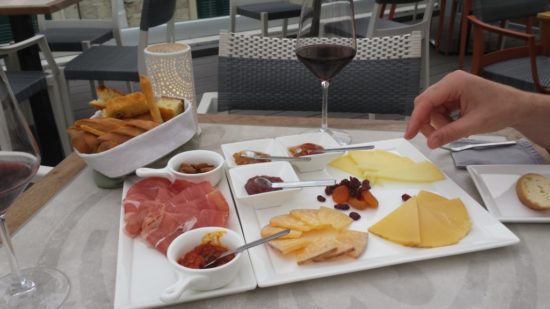
When we could no longer consume anymore wine and cheese, we headed back out for an evening stroll along the esplanade to choose which luxury yacht we wanted to own and took a final stroll around the old town. I would definitely recommend visiting the old town during both the day and night. The buildings took on a totally different feel in the evening, the lighting cast shadows and highlighted features that we hadn’t noticed during the day. Also, Split really comes alive at night, it really buzzes. There are a huge number of amazing restaurants and bars to choose from.
Before we headed back to our apartment, we decided to treat ourselves at Luka Ice Cream and Cakes (Svachiceva 2, Split 21000). Everything is made fresh and the ice cream is made using natural colours and flavours. They had an interesting variety of flavours to choose from. I ended up getting both a scoop of ice cream as well as a piece of the traditional Croatian Sacher-Torte which is chocolate cake with a light layer of apricot jam and topped with chocolate icing. It was the perfect way to end our evening in Split.
The following day we headed to the beautiful island of Brac.
Practical Tips for Visiting Split
- How long should I visit for? At least a day, however, there is enough to keep you busy for several.
- Language: Croatian. Although most people we came across spoke some English, do try your hand at a few Croatian words:
- Yes = Da (da)
- No = Ne (ne)
- Please = Molim (MOH-leem)
- Thank you = Hvala (HVAH-lah)
- Hello = Bok (bohk)
- Currency: Croatian Kuna.
- Tipping: Not required, but people usually round up.
- Electricity: The electrical current is 230 volts AC. Wall outlets generally take the European two round prong plugs. However, you are better off purchasing a worldwide adaptor that can be used in Croatia as well other countries. At least then you can potentially get some further use out of it on future vacations. If you’re taking a number of electronics with you, then I would recommend purchasing a couple of these adaptors.
- Navigating: We used Google’s free Offline Maps. Google Offline Maps allows you to access free maps for navigating that can be used offline i.e. you don’t need WIFI, data, or roaming to be able to use them. Follow this detailed guide on how to use Googles Offline Maps. Using your phone as a GPS will drain your battery quickly, so use a portable battery charger which you can use to charge your phone and any other USB chargeable devices. If you prefer a paper map, then purchase a Croatian road map before you go. At least it’s reliable and won’t run out of battery or malfunction like the electronic options!
Accommodation Options in Split
Search available accommodation in Split

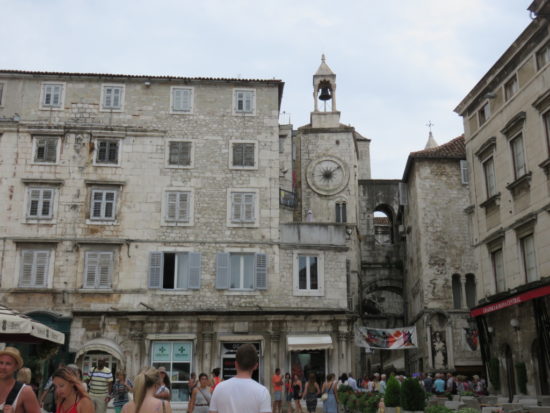
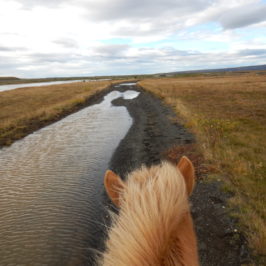
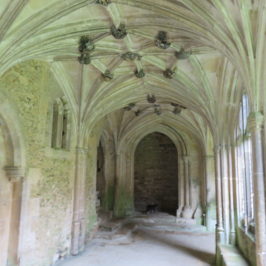
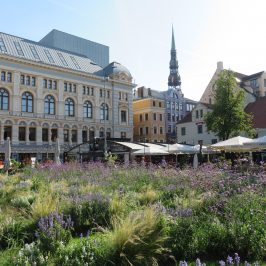
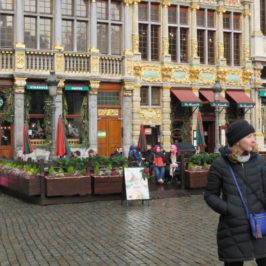
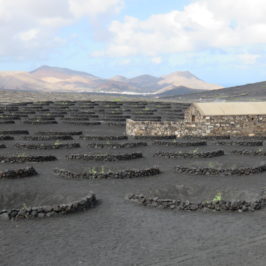
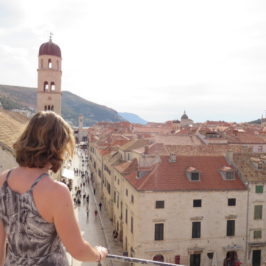
Leave a Reply